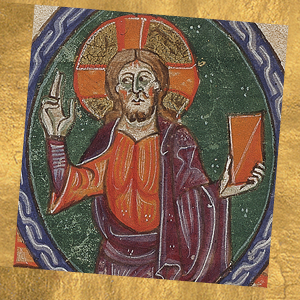St. Agatha, Virgin and Martyr

In the Sicily of the 3rd century, the story of Agatha descends between Catania and Palermo, the two cities that contend the honor of being the martyr’s birthplace. Reading her Passio, it seems it can be inferred that the girl was born in AD 235 at the foot of Mt. Etna, to a wealthy noble family. She is still an adolescent when she manifests the will to consecrate herself to God, and with the ritual of velatio (the “taking of the veil”) receives from her bishop the flammeum, the red veil then worn by consecrated virgins. Tradition also describes her as a deaconess (an office), dedicated to service in the Christian community. In AD 250 the edict of Emperor Decius against Christians opened a long persecution, and in Catania, the ruthless proconsul Quintian, who was infatuated with Agatha, is given charge of the edict’s application.
Escape to Palermo and martyrdom
The young woman fled to Palermo, but was found and taken back to Catania, conducted by Quintian. She refuses to abjure her faith. The proconsul, determined to attack the virginity of the girl, entrusts her to a courtesan of easy habits, Aphrodisia, to educate her in the arts of love. Agatha remained faithful to Christ, and kept her virginity, so she was sent back to Quintian, who decided to submit her to trial. The Acts of the Martyrdom of Saint Agatha report the conversations. “What is your condition?” Asks Quintian. Agatha responds, “Not only was I born free, but of noble family.” Quintian: “And if you claim to be free and noble, why do you show yourself to live and dress like a slave?” “Because I am a servant of Christ,” Agatha replies. Quintian again: “But if you are really free and noble, why do you want to be a slave?” Agatha: “The greatest freedom and nobility is here: to prove to be Christ's servants.” Quintian replies: “And what about it? We who despise the servitude of Christ and venerate the gods have no freedom?” “Your freedom draws you to such slavery, which not only makes you servants of sin but also submits you to wood and stones,” Agatha says. In the face of these words Quintian urges Agatha once again to deny Christ, and to induce her to reflect, sends her to jail. The next day, in the face of the young woman’s refusal, he decides that she is to be subjected to torture. Furious to see her face the pain with courage, Quintian commanded that her breasts be torn away. Agatha is brought back to prison sore and bloody, but in the night St. Peter appears to her, and heals her wounded breasts. Again before the court, Agatha again refuses to worship the gods and claims to have been healed by Jesus Christ. Furious at the girl’s courage despite torture, Quintian decides she is to be raked across hot coals, wrapped only in her red veil, symbol of her betrothal to Christ.
Agatha’s death shakes Catania
“As the order was executed, immediately the place where the holy body was turned was shaken ... even the whole city of Catania was shocked by the vexation of the earthquake. So they all ran to the judge’s court and began to tumble greatly, because he was tormenting the holy servant of God, and all of them were in grave danger.” Agatha, with her veil intact, is taken from the brazier and, “[I]n jail again, extended her arms to the Lord, and said, ‘You Lord, who have created and guarded me from my childhood, and made me to act with manly strength, have taken from me the love of the passing world, who kept my body from contamination, who made me overcome the torments of the executioner, the iron, the fire, and the chains, who gave me in torment the virtue of patience! Please accept my spirit now, for it is already time that I should leave this world by your command and reach your mercy.’ Having spoken these words in the presence of many, she was silent, and gave up her spirit.” It was February 5 of the year 251.
The miracle of the lava
Her Acts go on to report: “After a year ... Mount Etna erupted a great fire, and like a fiery river, so the fiery liquid, melting stones and earth, came to the city of Catania.” Many went to Agatha's sepulcher to ask for her intercession, and her veil was placed before the lava flow. Miraculously the lava stopped. The fame of the prodigy is such that Agatha became the patron saint of Catania. Her cult therefore began the year after her martyrdom and spread rapidly everywhere. Her relics are preserved in Catania in the cathedral dedicated to her.
More upcoming events:







 Your contribution for a great mission
Your contribution for a great mission

